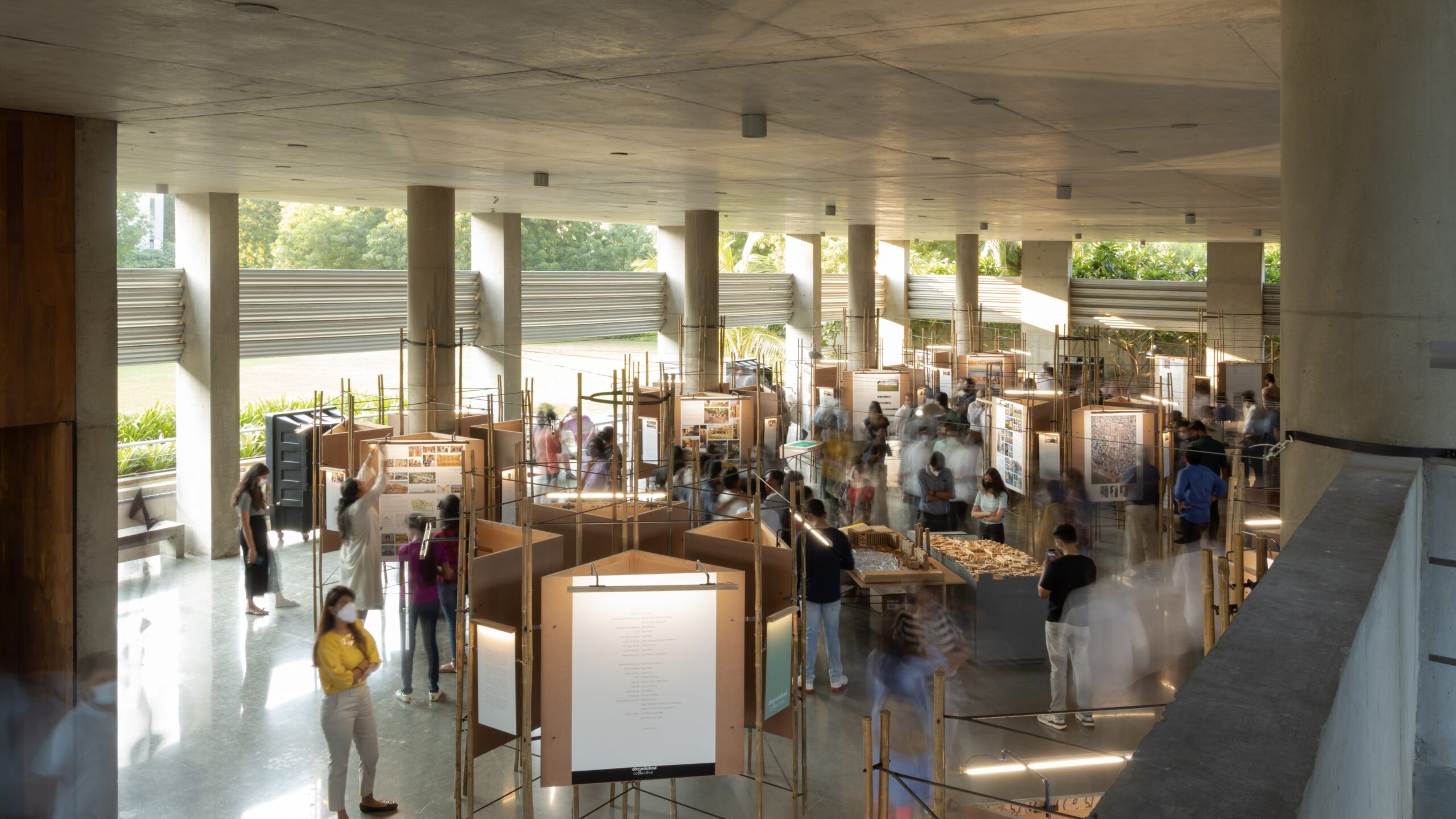
Ahmedabad Collective, IIA, Ahmedabad designed by Doro
A first-of-its-kind initiative by IIA, Ahmedabad, aiming to showcase the Architectural strength of the city to its patrons. This edition exhibited the works of various well-established and renowned practices across Ahmedabad, set up in the GIHED CREDAI building.
The Exhibition layout was devised to allow the viewers to approach and exit from the same area, but once within the exhibition space, it allowed viewers to move around freely creating a route of their own.
In order to achieve a free movement of viewers, the exhibits were designed as islands of 2/4 modules wrapped around the existing column of the exhibition space.

This ensured that the exhibits used the existing structure as well as freed up the space around the columns for movement. The larger free spaces created by this setup housed the architectural models which were placed on tables strategically allowing good visibility and creating pockets for the audience to gather and discuss. Each exhibit island housed an A0 portrait panel dedicated to an Architectural practice with an introductory write-up of the firm next to it.
Given the temporary nature of the exhibition, solid bamboo was the ideal choice of material for the vertical members keeping its durability in mind, since it gave the freedom of reusability in multiple ways post-dismantling.
Metal, another extremely durable material allowed for the structure to look light as well as allow for reusability apart from its additional strength within the structure. 6mm thick MDF with a thin ply frame was not only a cost-effective choice but an environmentally friendly choice of material to create the exhibit boxes that were easy to assemble, dismantle as well as dispose of if necessary.
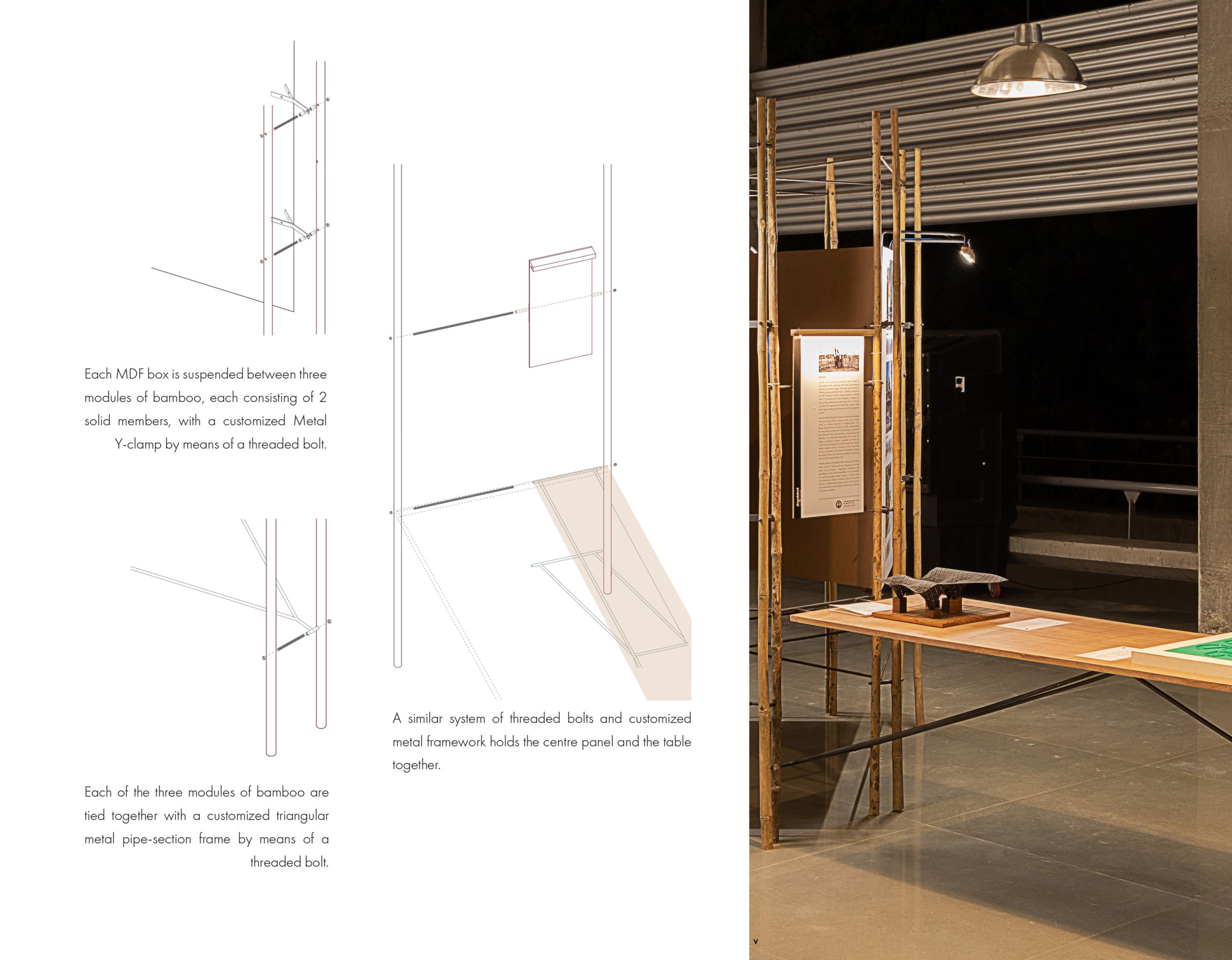


The primary materials used to bring the exhibition together were metal, bamboo, and MDF. Each module consisted of 3 columns (2 solid bamboo members joined together by threaded bolts and nuts) which were tied together by 10mm thick solid metal rings.
The basic structure of the Exhibit was created by all the materials coming together. The MDF boxes which became the backdrop for each panel is made to float between the basic structure to give each module its structural rigidity as well as strength. The entire structure was tied together with a very simple yet intricate system of threaded bolts and nuts that can easily be assembled as well as dismantled with the right set of tools.
Notwithstanding the already prevalent challenges of the GIHED CREDAI site, the greatest challenge was that of lighting the space as well as the panels at multiple points without being able to actually screw, nail or clamp directly to the existing structure. A grid of 3mm tensile wire spans between the existing columns by creating clamps supported by the top of bamboo modules. This allowed for wiring and lighting across the entire exhibition. each module housed two sets of lights, one lighting up its respective panel and one from within the box, lighting up the ceiling of the hall, thus, directly brightening up the entire exhibition space.
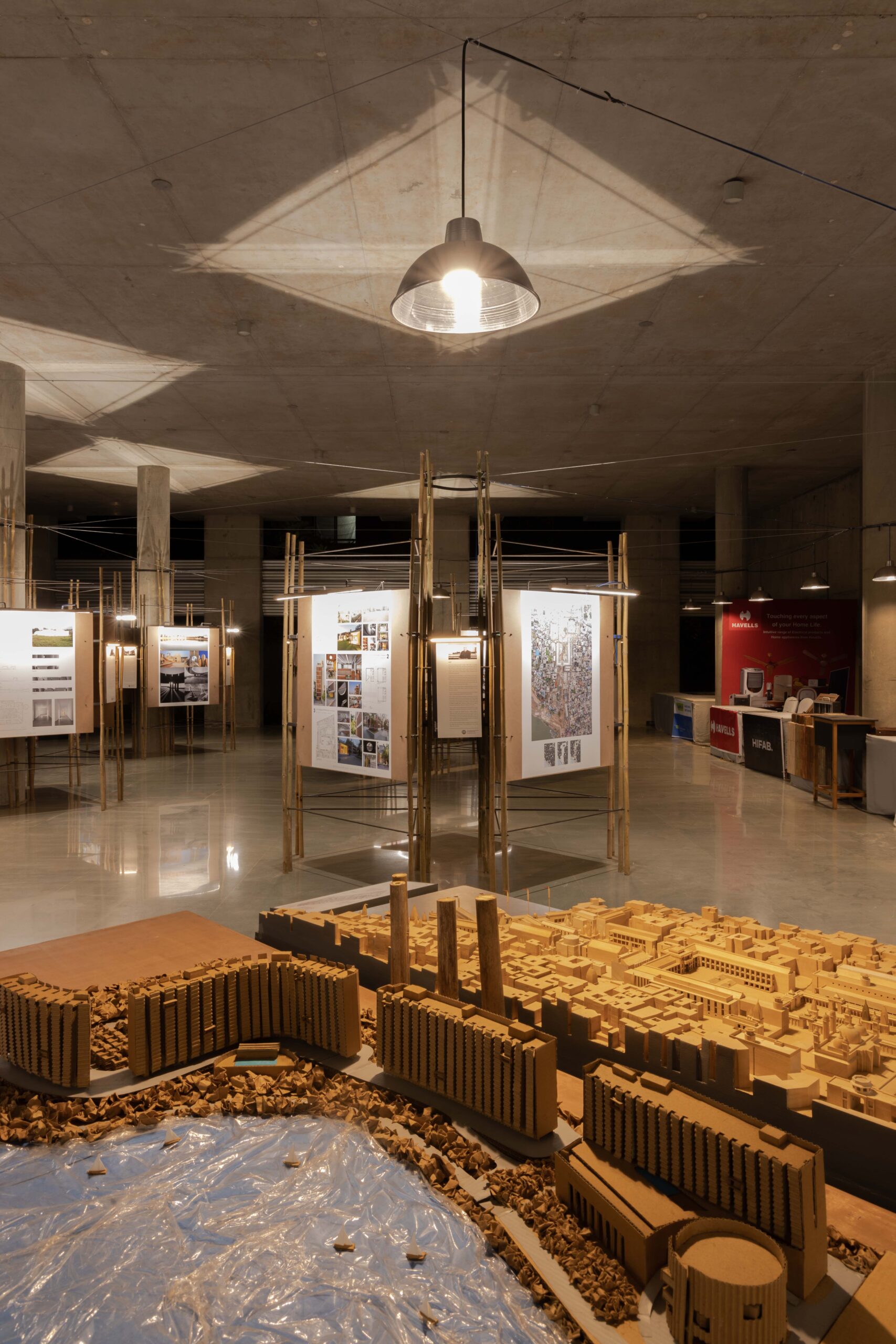
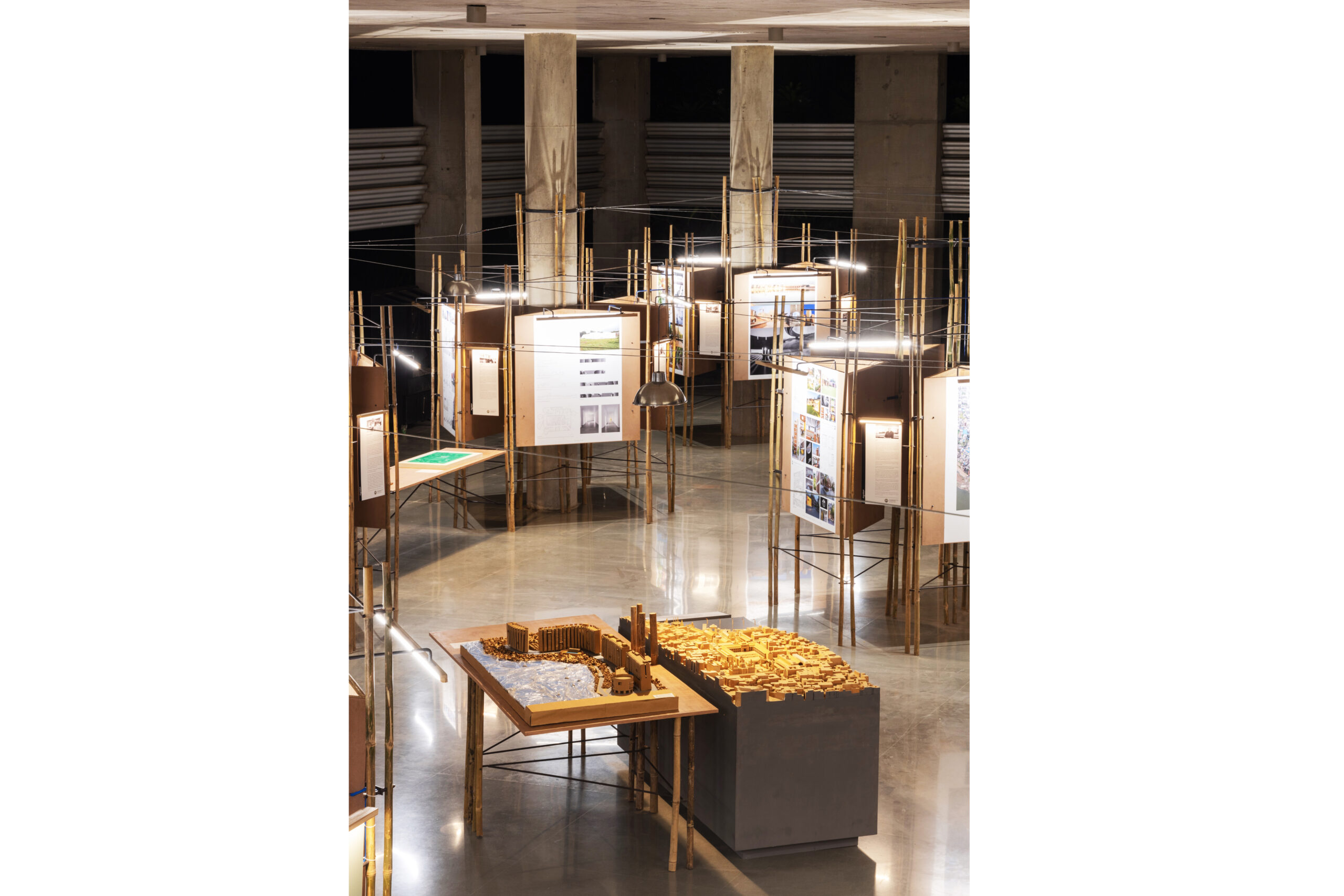
There was a little ambiguity with regard to the future of the exhibits post the main event determined a few design choices including the need for a module that is easy to replicate as well as assemble. The design needed to be able to adapt to different sorts of space with the possibility of growth or scaling down, if required. Hence, each module was designed to be self-supporting/ standing and strong enough to be transported and reused multiple times.
This exhibition now continues to move to the School of Architecture across the city of Ahmedabad.
Gallery of Ahmedabad Collective
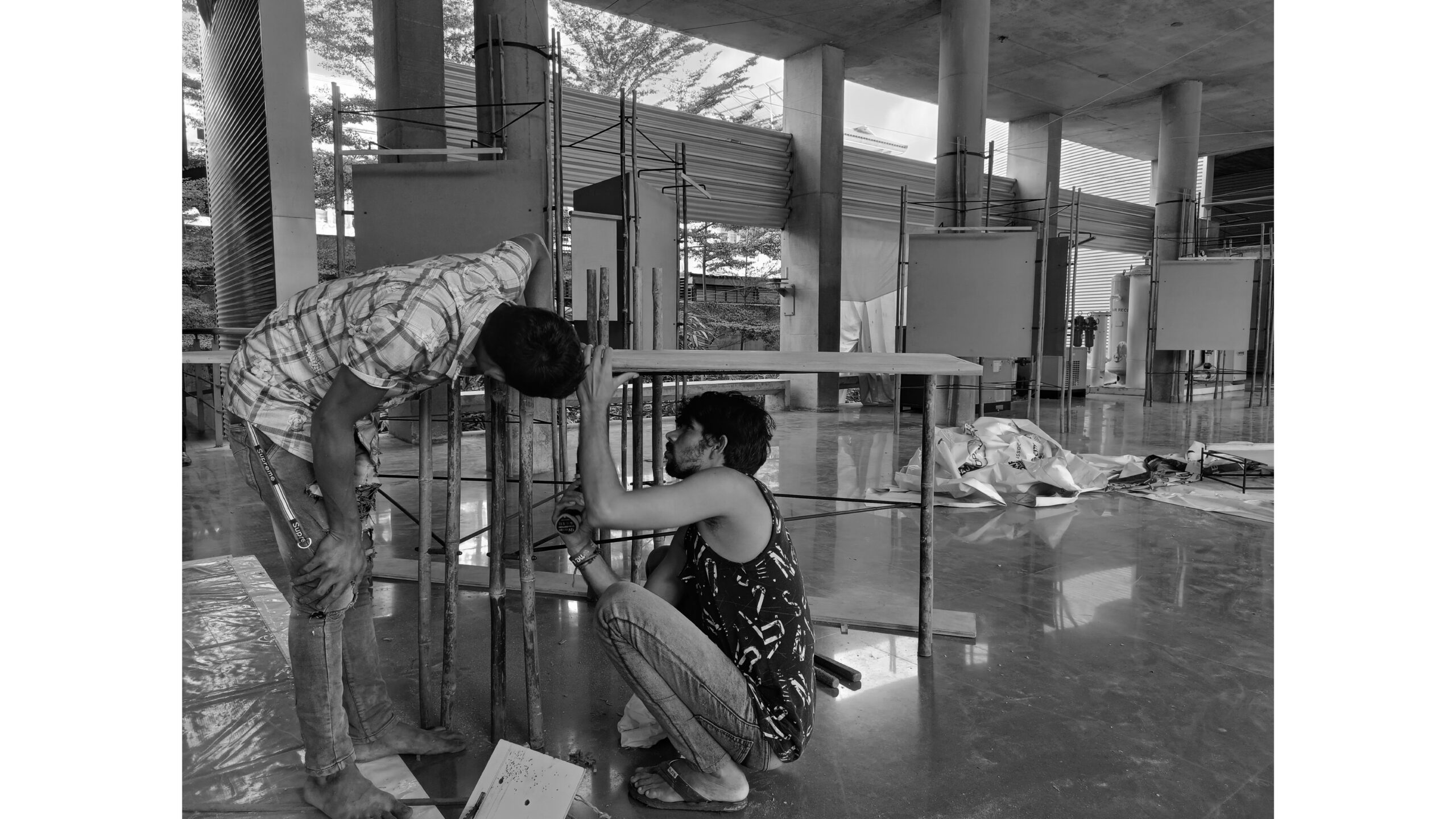
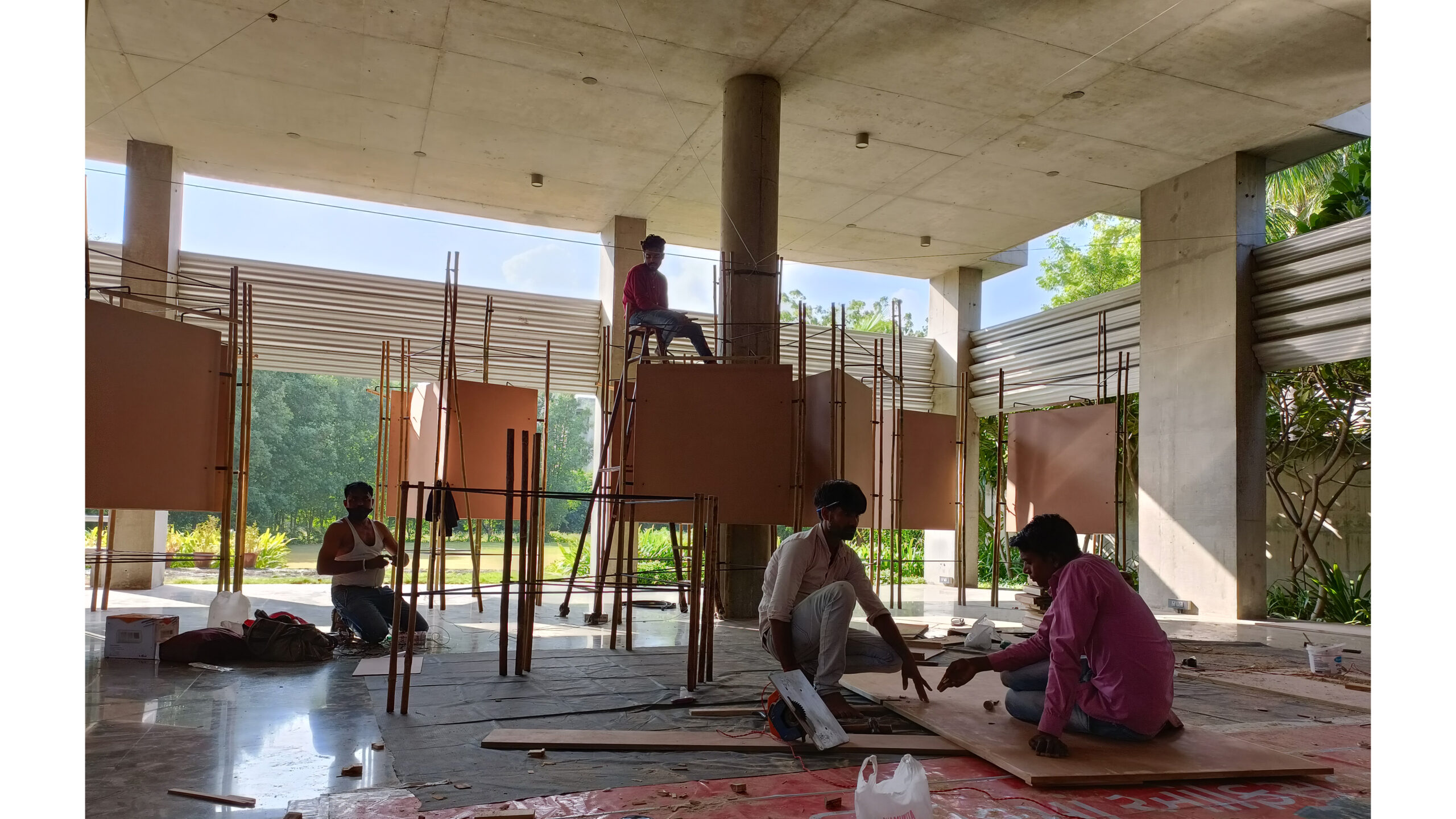
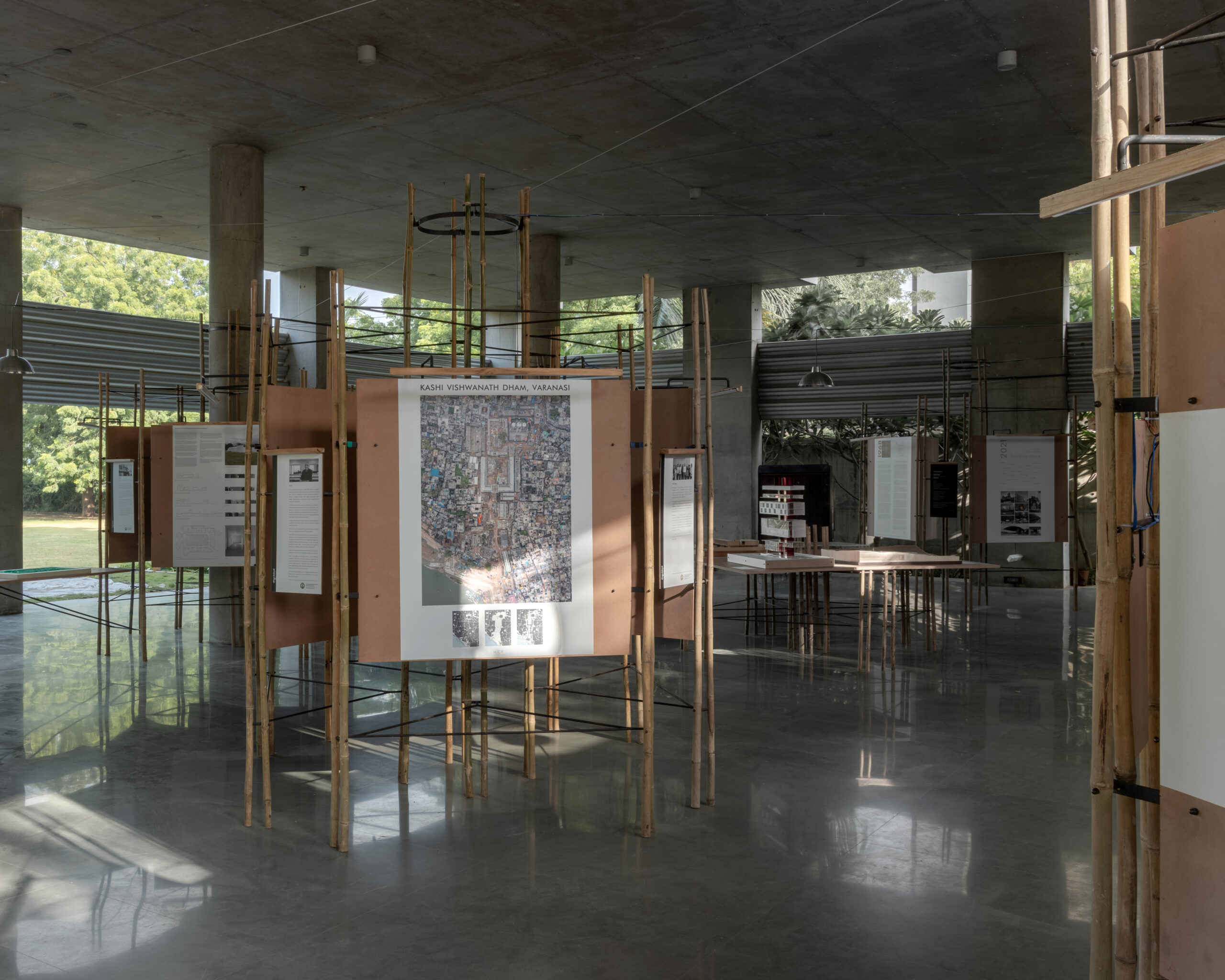








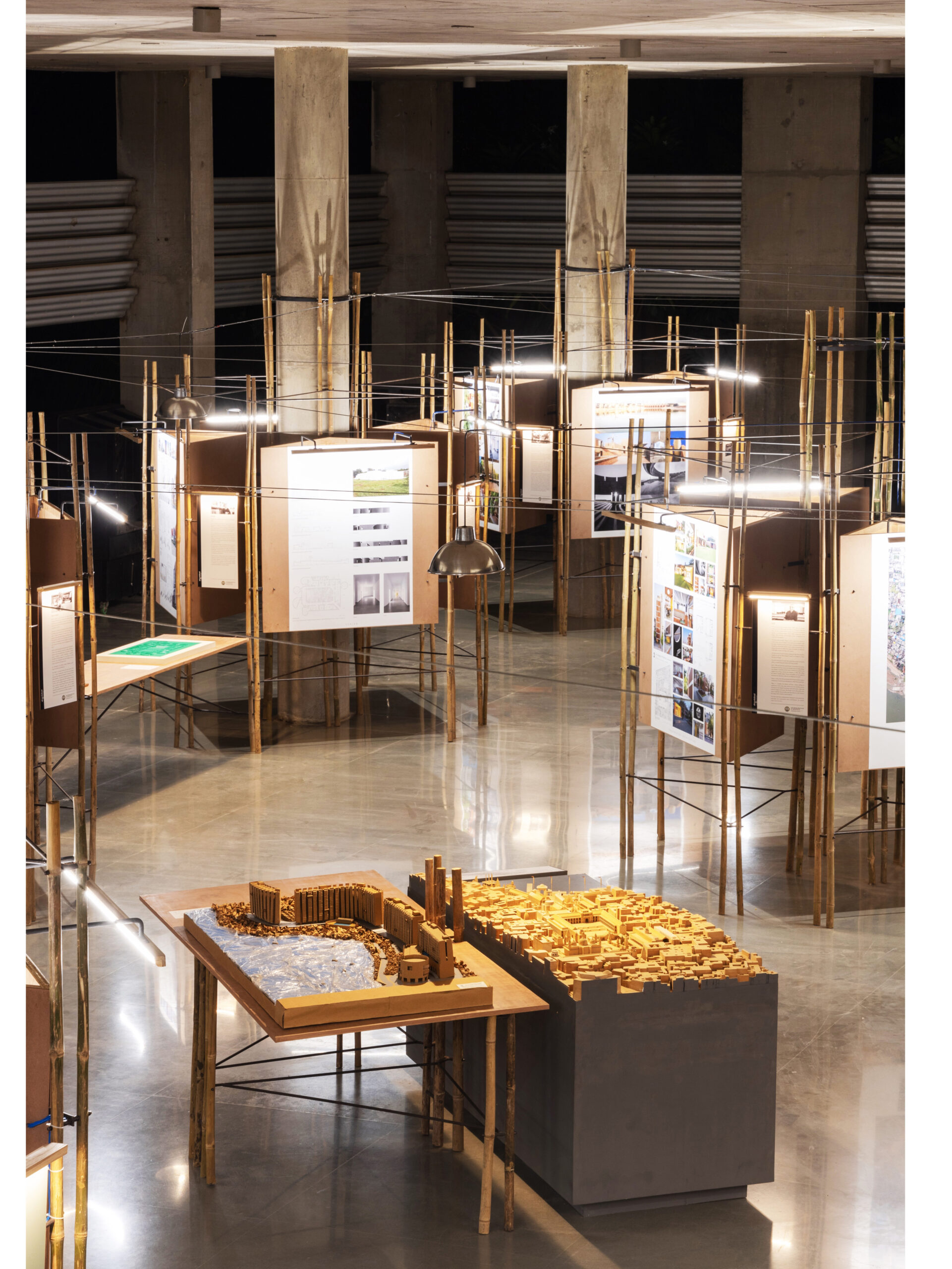

Drawings



Project Facts
Location- Gihed Credai, Ahmedabad
Exhibition Design Team- Caleb, Naomy, Jay, Vaidehi, Pankaj, Khushi
Video and Editing- Rahul, Parth, Stavan, Janki
Bamboo Artisans- Subrata, Vikas, Kishan, Ravi, Sunil
Electrician- Jagdish, Siddhart Fabricators – Amit, Dinesh
Carpenter- Pradip, Pappu, Ramsundar, Aakash, Narendra, Arvind
Lighting support- Interio Lighting
Location support- All the staff at Gihed Credai
Photographry- Karan-Space Tracing Company, Stavan






